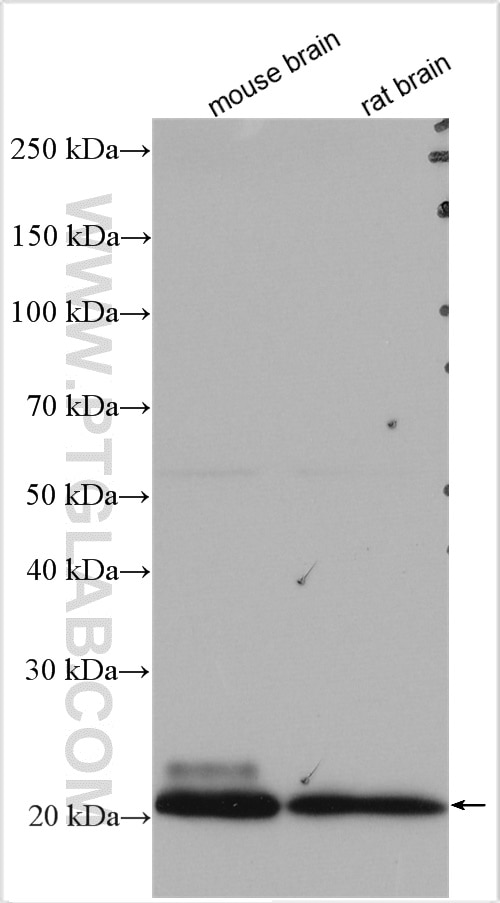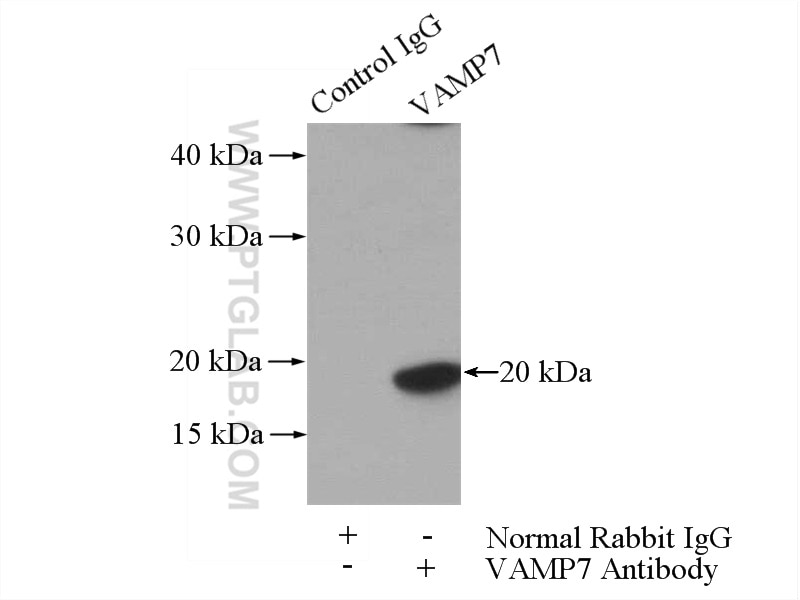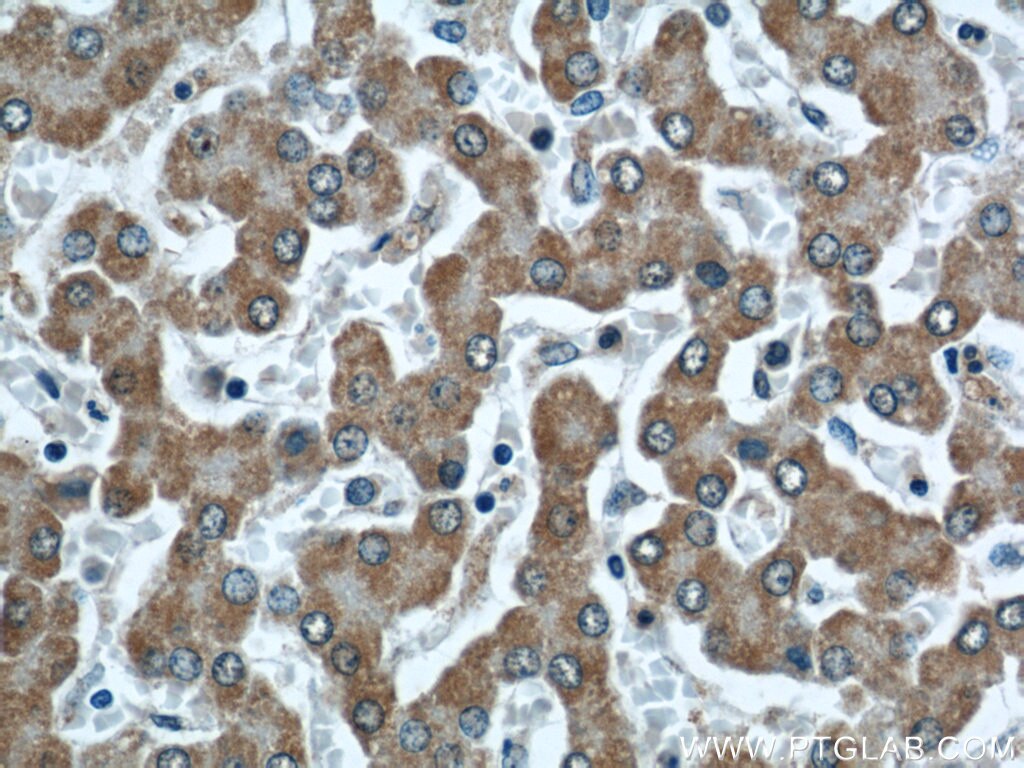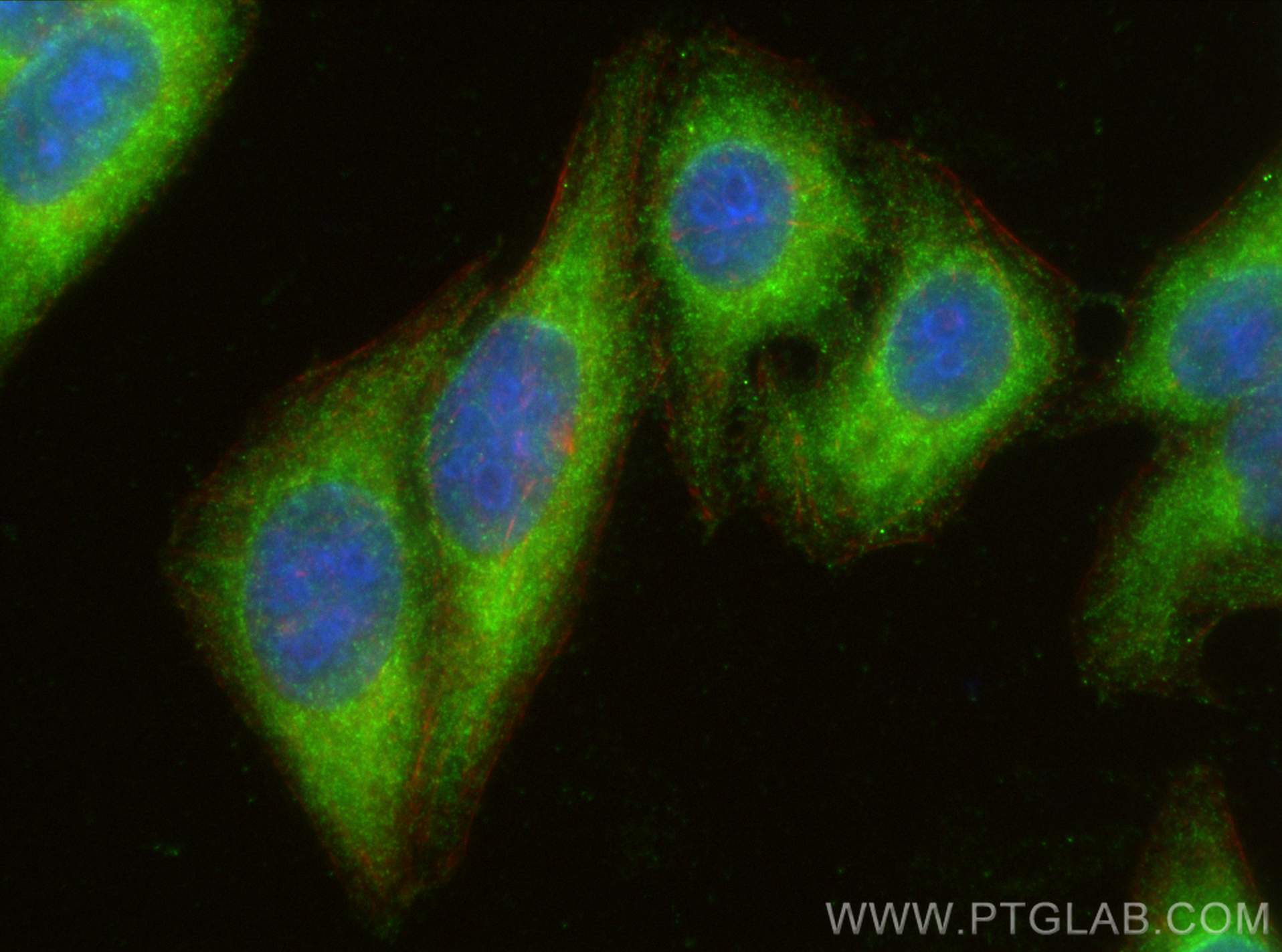Validation Data Gallery
Tested Applications
| Positive WB detected in | mouse brain tissue, rat brain tissue |
| Positive IP detected in | mouse brain tissue |
| Positive IHC detected in | human liver tissue, human small intestine tissue Note: suggested antigen retrieval with TE buffer pH 9.0; (*) Alternatively, antigen retrieval may be performed with citrate buffer pH 6.0 |
| Positive IF/ICC detected in | HepG2 cells |
Recommended dilution
| Application | Dilution |
|---|---|
| Western Blot (WB) | WB : 1:1000-1:8000 |
| Immunoprecipitation (IP) | IP : 0.5-4.0 ug for 1.0-3.0 mg of total protein lysate |
| Immunohistochemistry (IHC) | IHC : 1:50-1:500 |
| Immunofluorescence (IF)/ICC | IF/ICC : 1:50-1:500 |
| It is recommended that this reagent should be titrated in each testing system to obtain optimal results. | |
| Sample-dependent, Check data in validation data gallery. | |
Published Applications
| KD/KO | See 3 publications below |
| WB | See 5 publications below |
| IF | See 1 publications below |
Product Information
22268-1-AP targets VAMP7/TI-VAMP in WB, IHC, IF/ICC, IP, ELISA, Blocking applications and shows reactivity with human, mouse, rat samples.
| Tested Reactivity | human, mouse, rat |
| Cited Reactivity | human, mouse, rat |
| Host / Isotype | Rabbit / IgG |
| Class | Polyclonal |
| Type | Antibody |
| Immunogen | Peptide 相同性解析による交差性が予測される生物種 |
| Full Name | vesicle-associated membrane protein 7 |
| Calculated molecular weight | 25 kDa |
| Observed molecular weight | 20-25 kDa |
| GenBank accession number | NM_005638 |
| Gene Symbol | VAMP7 |
| Gene ID (NCBI) | 6845 |
| RRID | AB_11182718 |
| Conjugate | Unconjugated |
| Form | Liquid |
| Purification Method | Antigen affinity purification |
| UNIPROT ID | P51809 |
| Storage Buffer | PBS with 0.02% sodium azide and 50% glycerol |
| Storage Conditions | Store at -20°C. Stable for one year after shipment. Aliquoting is unnecessary for -20oC storage. |
Background Information
VAMP7, also named SYBL1 and TI-VAMP, belongs to the synaptobrevin family. It is involved in the targeting and/or fusion of transport vesicles to their target membrane during the transport of proteins from the early endosome to the lysosome. VAMP7 is required for heterotypic fusion of late endosomes with lysosomes and homotypic lysosomal fusion. It is necessary for calcium-regulated lysosomal exocytosis. VAMP7 is involved in the export of chylomicrons from the endoplasmic reticulum to the cis Golgi. It is required for exocytosis of mediators during eosinophil and neutrophil degranulation, and target cell killing by natural killer cells. It is also required for focal exocytosis of late endocytic vesicles during phagosome formation. The antibody is specific to VAMP7.
Protocols
| Product Specific Protocols | |
|---|---|
| WB protocol for VAMP7/TI-VAMP antibody 22268-1-AP | Download protocol |
| IHC protocol for VAMP7/TI-VAMP antibody 22268-1-AP | Download protocol |
| IF protocol for VAMP7/TI-VAMP antibody 22268-1-AP | Download protocol |
| IP protocol for VAMP7/TI-VAMP antibody 22268-1-AP | Download protocol |
| Standard Protocols | |
|---|---|
| Click here to view our Standard Protocols |
Publications
| Species | Application | Title |
|---|---|---|
Adv Sci (Weinh) Engineered Cell-Derived Microparticles Bi2Se3/DOX@MPs for Imaging Guided Synergistic Photothermal/Low-Dose Chemotherapy of Cancer. | ||
Autophagy Bunyavirus SFTSV exploits autophagic flux for viral assembly and egress
| ||
Cancer Res Commun Combination of a New Oral Demethylating Agent, OR2100, and Venetoclax for Treatment of Acute Myeloid Leukemia
| ||
Biochem Biophys Res Commun VAMP7 knockdown in secretory granules impairs CCL2 secretion in mast cells
| ||
Cell Discov Packaged release and targeted delivery of cytokines by migrasomes in circulation |









